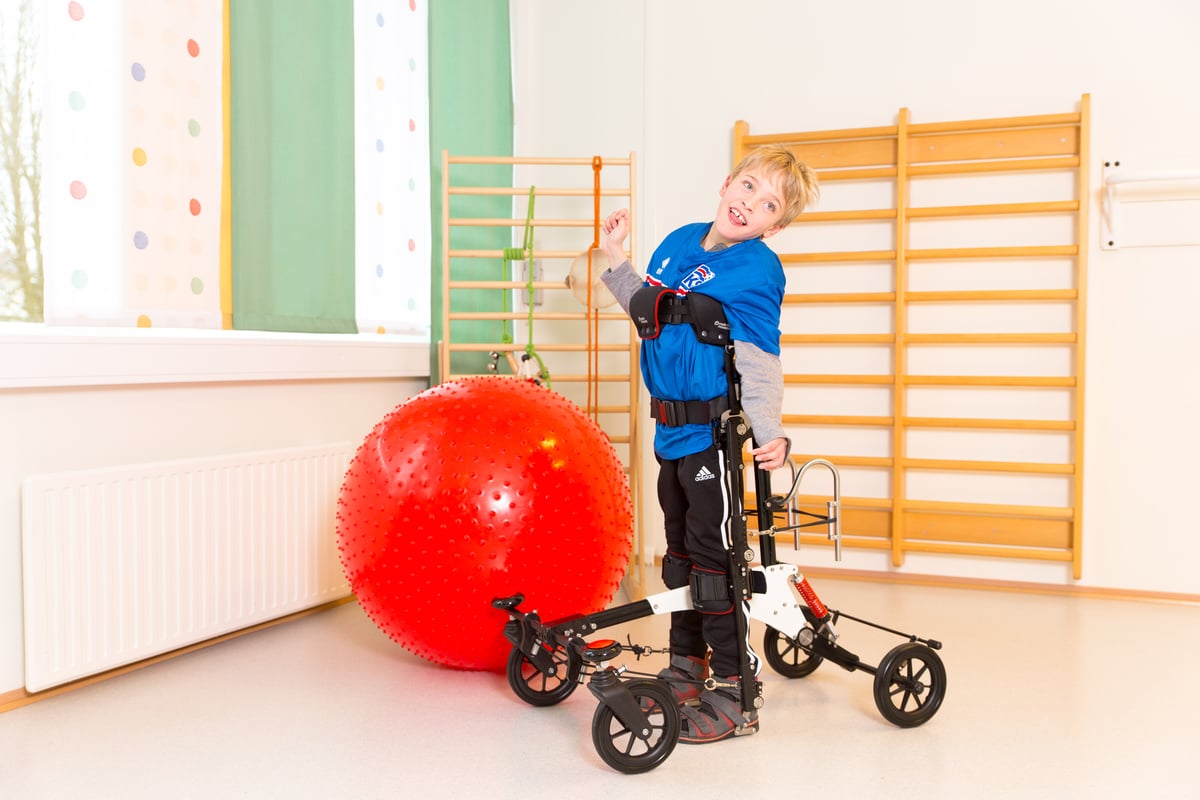Interview with Katarina Lauruschkus: Physical activity for everyone


Physical activity is important for everyone, including children with disabilities. Not only is it essential for health benefits, such as increasing the mobility and functionality, but it can also give a sense of achievement – and can be an excellent way to make new friends.
We talked to physical activity expert Katarina Lauruschkus (Ph.D. in Disability Research ) about the importance of physical activity and how children with disabilities can become more active.
) about the importance of physical activity and how children with disabilities can become more active.
Katarina lectures across Norway and Sweden on ‘physical activity for everyone’. Her Disability Studies Ph.D. at Lunds University focused on rehabilitation and physiotherapy at the Child and Youth Habilitation facility in Skåne in Southern Sweden.
How can children with disabilities become more involved in physical activity?
Many children with disabilities don’t always know what they can do, or which activities might fit them. It’s important to make them aware of their options so that they can make decisions. Most children want to be active, but some can’t get started. Sometimes it’s because they lack energy, as their daily lives already take a lot of effort. But even when this is the case, it’s important to show them what they can do and provide guidance so that they can find activities they like.
What benefits come from physical activity?
There are significant benefits from physical activity. Each child increases their fitness level and their cardiovascular capacity. For instance it has a positive effect on the heart, lungs and blood sugar levels. Also, we see positive psychological effects, and we know it activates different parts of the brain. Physical activity is good medicine for depression. It’s important for children to experience movement even if they can’t walk or stand themselves.

What kind of intensity is needed for a child with different needs: light, moderate or high?
International recommendations say that children are supposed to spend 60 minutes a day doing moderate to high-intensity activities, but we also see clear benefits from light intensity activities. And don’t forget activities of daily living. It’s important to reduce time spent sitting, as even standing can be an important contribution to health. The recommended time to stand is between 60 and 90 minutes a day.
Katarina’s recommendations on physical activity
The recommended physical activity for children and young adults (from 5-17 years) is at least 60 minutes every day, which can be split throughout the day.
Intensity should be both high and moderate, but this will vary depending on the level of CP. For children with GMFCS level III-V light intensity is also recommended. Aim to reduce sedentary time and increase physical activity with low-intensity exercise.
Which cognitive benefits does physical activity bring?
There’s more research coming out on this topic all the time, and we now believe that physical activity has greater cognitive effects than we had previously thought. Physical activity improves the memory, and it’s useful for learning situations. It helps children do better in school. When you’re physically active you feel better; you have more energy, and you don’t feel as tired.
And which physical benefits does exercise bring to children?
Physical activity improves movement skills, body control, and fitness levels. Their muscles get stronger, and they’re able to take deeper breaths, which is good, as oxygen intake is very important for their lungs and heart. They become more healthy, and are, as a result, less likely to become ill. Physical activity even improves their quality of life.
What sorts of physical activity can children with disabilities – GMFCS III, IV, and V in particular – do in their spare time?
To an extent, it depends on where you live and those who live in or close to the major cities can find more things to do. But in most places you can find most common activities like horseback riding and swimming, and don’t forget to do routine activities in standing position at home. Non-organised physical activities such as playing on playground, biking or active transfers can be done everywhere and are popular among the children.
There are several ways of modifying well known activities, and if you are creative there are few limitations to the games you can play. For more information, download our activities guide for inspiration to fun activities for the entire family.
It’s very important for their motivation. Children want to make a choice, and to express what they like and don’t like. It’s also important for parents and caregivers to ask questions as to why a child prefers one activity over another. When a child feels more in control, it’s more likely that they will stick to their preferred activity and increase their quality of life.

Rikke Damkjær Moen brings many years of experience as clinical physiotherapist to the Made for Movement team. Her mission is to ensure that everybody, regardless of mobility problems, should be able to experience the joy and health benefits of physical activity. As our Medical Manager, Rikke is passionate about sharing knowledge so that individuals with special needs, families, and clinicians can discover the possibilities and solutions provided by Made for Movement.
The Innowalk Pro full-body movement trainer has been in daily use at the SRH Fachkrankenhaus Neresheim since June 2022. Learn all...
"Alt Movement” in Essex, is an gym for individuals with disabilities. It is an inclusive and welcoming space, where adaptive athletes...
The studyincludedchildrenwith cerebral palsy GMFCS IV and V showedthatseveral hormonal and inflammatorybiomarkersaredysregulated in...
Hear from us from time to time and learn new things
